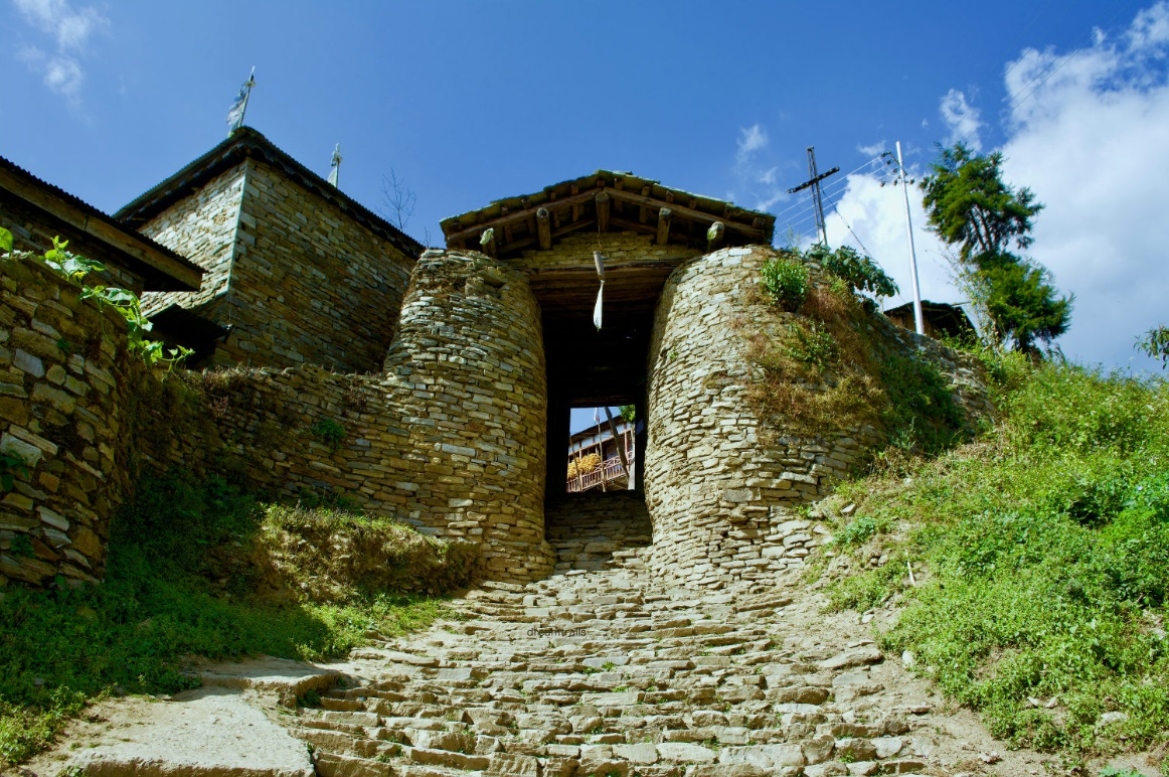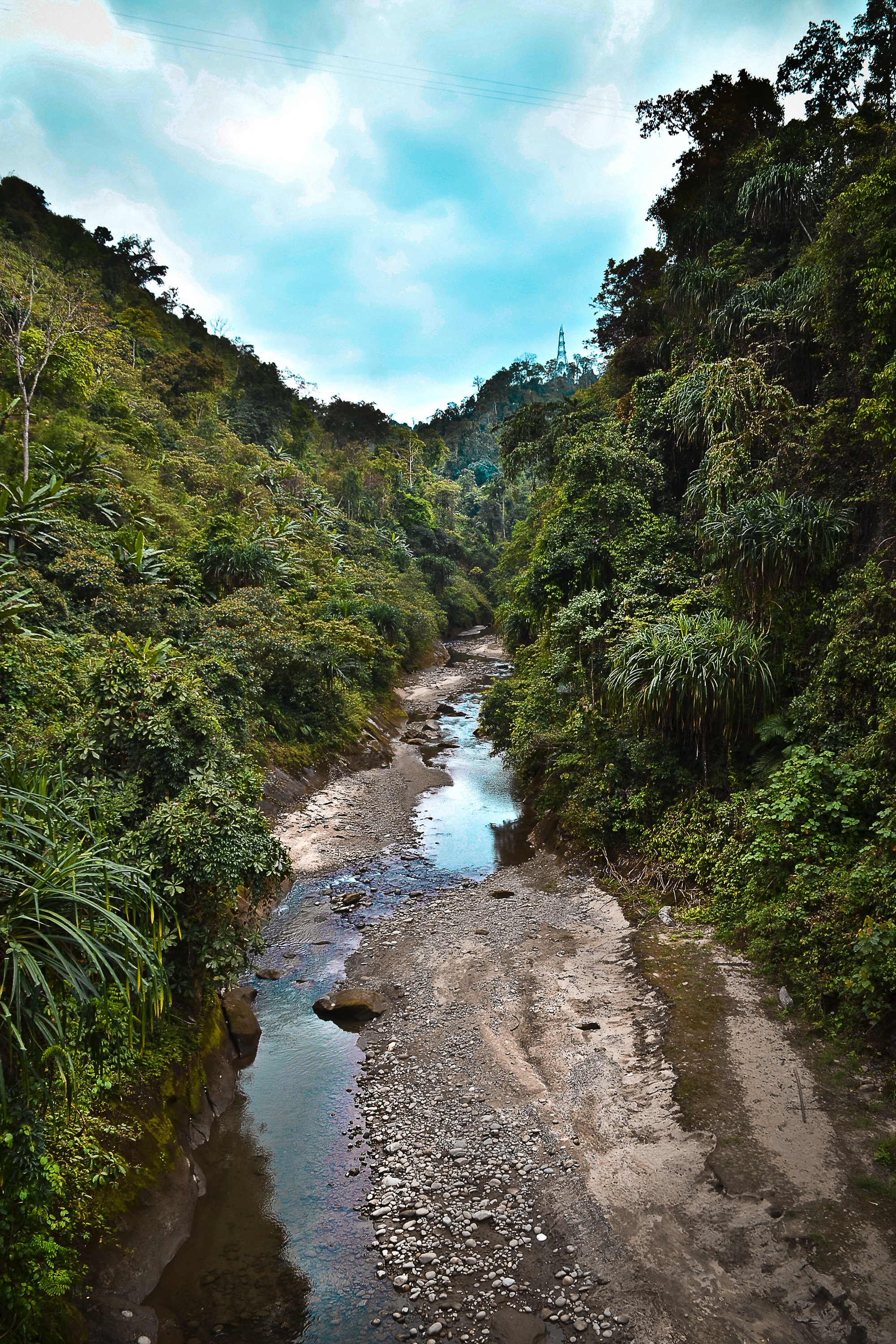|
Sartang Language
Sartang is a small language of India. It is one of the Kho-Bwa languages, closest to Sherdukpen (50–60% lexical similarity). Varieties include Sartang of Jergaon and Sartang of Rahung (Blench 2015).Blench, Roger. 2015''The Mey languages and their classification'' Presentation given at the University of Sydney. Distribution Sartang (Boot Monpa) is spoken in the villages of Khoitam, Rahung, Namku-thangka (Salari), and Boot (Jerigaon) Khoina, West Kameng District (Dondrup 2004:1).Dondrup, Rinchin. 2004. ''An introduction to the Boot Monpa language''. Itanagar: Directorate of Research, Government of Arunachal Pradesh. There were 2,986 Sartang people as of 1996. The ''Ethnologue'' lists Jerigaon, Sellary, Khoitam, Rahung, Darbu and Khoina villages in Nafra and Dirang circles, West Kameng district. Varieties According to Roger Blench (2015), Sartang is a cover term referring to various languages spoken in 11 villages southeast of Dirang in Nafra and Dirang circles in West Kameng Di ... [...More Info...] [...Related Items...] OR: [Wikipedia] [Google] [Baidu] |
India
India, officially the Republic of India, is a country in South Asia. It is the List of countries and dependencies by area, seventh-largest country by area; the List of countries by population (United Nations), most populous country since 2023; and, since its independence in 1947, the world's most populous democracy. Bounded by the Indian Ocean on the south, the Arabian Sea on the southwest, and the Bay of Bengal on the southeast, it shares land borders with Pakistan to the west; China, Nepal, and Bhutan to the north; and Bangladesh and Myanmar to the east. In the Indian Ocean, India is near Sri Lanka and the Maldives; its Andaman and Nicobar Islands share a maritime border with Thailand, Myanmar, and Indonesia. Modern humans arrived on the Indian subcontinent from Africa no later than 55,000 years ago., "Y-Chromosome and Mt-DNA data support the colonization of South Asia by modern humans originating in Africa. ... Coalescence dates for most non-European populations averag ... [...More Info...] [...Related Items...] OR: [Wikipedia] [Google] [Baidu] |
Arunachal Pradesh
Arunachal Pradesh (; ) is a States and union territories of India, state in northeast India. It was formed from the North-East Frontier Agency (NEFA) region, and India declared it as a state on 20 February 1987. Itanagar is its capital and largest town. It borders the Indian states of Assam and Nagaland to the south. It shares Borders of India, international borders with Bhutan in the west, Myanmar in the east, and a disputed 1,129 km border with China's Tibet Autonomous Region in the north at the McMahon Line. Arunachal Pradesh is claimed in its entirety by China as South Tibet as part of the Tibet Autonomous Region; China Sino-Indian War, occupied some regions of Arunachal Pradesh in 1962 but later withdrew its forces. As of the 2011 Census of India, Arunachal Pradesh has a population of 1,383,727 and an area of . With only 17 inhabitants per square kilometre, it is the least densely populated state of India. It is an ethnically diverse state, with predominantly Monpa p ... [...More Info...] [...Related Items...] OR: [Wikipedia] [Google] [Baidu] |
Tibeto-Burman Languages
The Tibeto-Burman languages are the non- Sinitic members of the Sino-Tibetan language family, over 400 of which are spoken throughout the Southeast Asian Massif ("Zomia") as well as parts of East Asia and South Asia. Around 60 million people speak Tibeto-Burman languages. The name derives from the most widely spoken of these languages, Burmese and the Tibetic languages, which also have extensive literary traditions, dating from the 12th and 7th centuries respectively. Most of the other languages are spoken by much smaller communities, and many of them have not been described in detail. Though the division of Sino-Tibetan into Sinitic and Tibeto-Burman branches (e.g. Benedict, Matisoff) is widely used, some historical linguists criticize this classification, as the non-Sinitic Sino-Tibetan languages lack any shared innovations in phonology or morphology to show that they comprise a clade of the phylogenetic tree. History During the 18th century, several scholars noticed paral ... [...More Info...] [...Related Items...] OR: [Wikipedia] [Google] [Baidu] |
Kho-Bwa Languages
The Kho-Bwa languages, also known as Kamengic, are a small family of languages, or pair of families, spoken in Arunachal Pradesh, northeast India. The name ''Kho-Bwa'' was originally proposed by George van Driem (2001). It is based on the reconstructed words ''*kho'' ("water") and ''*bwa'' ("fire"). Blench (2011) suggests the name ''Kamengic'', from the Kameng area of Arunachal Pradesh. Alternatively, Anderson (2014)Anderson, Gregory D.S. 2014. ''On the classification of the Hruso (Aka) language''. Paper presented at the 20th Himalayan Languages Symposium, Nanyang Technological University, Singapore. refers to Kho-Bwa as Northeast Kamengic. Both Van Driem and Blench group the Sherdukpen (or Mey), Lishpa (or Khispi), Chug (Duhumbi) and Sartang languages together. These form a language cluster and are clearly related. The pair of Sulung (or Puroik) and Khowa (or Bugun) languages are included in the family by Van Driem (2001) but provisionally treated as a second family by ... [...More Info...] [...Related Items...] OR: [Wikipedia] [Google] [Baidu] |
Sherdukpen Language
The Sherdukpen are an ethnic group of Arunachal Pradesh state of India. Their population of 9,663 is centered in West Kameng district in the villages of Rupa, Jigaon, Thongri, Shergaon, to the south of Bomdila. All of these are at elevations between 5000 and 6000 feet above sea level. Of late, some of them have settled in Kameng bari areas, a new settlement area under Bhalukpong circle. Society Sherdukpen society is divided into two classes: The Thong and Chao, The thong ( Higher caster) consist of Thongchi, Thongdok and Thongon. the former of which–the higher caste–are divided into eight clans. Marriage between inter-castes are considered taboo within the tribal society and are strongly discouraged. Local legend mentioned that the upper caste are the descendants of a Tibetan king (a grandson of Songtsän Gampo) and Ahom princess, of which they bore two sons. The Chao are the descendants of the king's porters and servants. The Sherdukpens migrate to Doimara (a l ... [...More Info...] [...Related Items...] OR: [Wikipedia] [Google] [Baidu] |
West Kameng District
West Kameng (pronounced ) is a district of Arunachal Pradesh in northeastern India. It accounts for 8.86% of the total area of the state. The name is derived from the Kameng river, a tributary of the Brahmaputra, that flows through the district. History The area around the Kameng river has traditionally come under the control of the Mon kingdom, Bhutan, Tibet and the Ahom kingdom. Tibetan Buddhism got a strong foothold among the tribal groups as early as in the 7th century, where the Kachen Lama constructed the Lhagyala Gompa in Morshing. Whenever loose control was exerted over the area, small, feudal chiefdoms ruled by the Miji and the Aka chiefs dominated control over the area. This can be evidenced in the fact that ruined fortresses like those in Bhalukpong constructed in the 10th to 12th century and the Dirang fort, which was constructed in the 17th century to defend against invasions from neighbouring chiefdoms. Upon the arrival of the British, the present- ... [...More Info...] [...Related Items...] OR: [Wikipedia] [Google] [Baidu] |
Ethnologue
''Ethnologue: Languages of the World'' is an annual reference publication in print and online that provides statistics and other information on the living languages of the world. It is the world's most comprehensive catalogue of languages. It was first issued in 1951 and is now published by SIL International, an American evangelical Parachurch organization, Christian non-profit organization. Overview and content ''Ethnologue'' has been published by SIL Global (formerly known as the Summer Institute of Linguistics), a Christian linguistics, linguistic service organization with an international office in Dallas, Texas. The organization studies numerous minority languages to facilitate language development, and to work with speakers of such language communities in translating portions of the Bible into their languages. Despite the Christian orientation of its publisher, ''Ethnologue'' is not ideologically or theologically biased. ''Ethnologue'' includes alternative names and Exo ... [...More Info...] [...Related Items...] OR: [Wikipedia] [Google] [Baidu] |
Dirang
Dirang H.Q. (simply Dirang) is a village in the district of West Kameng in the Indian state of Arunachal Pradesh Arunachal Pradesh (; ) is a States and union territories of India, state in northeast India. It was formed from the North-East Frontier Agency (NEFA) region, and India declared it as a state on 20 February 1987. Itanagar is its capital and la .... Dirang is one of the 60 constituencies of Legislative Assembly of Arunachal Pradesh. , Phurpa Tsering is the current MLA of Dirang. See also * List of constituencies of Arunachal Pradesh Legislative Assembly * Arunachal Pradesh Legislative Assembly References {{Reflist Villages in West Kameng district Dzongs in Tibet ... [...More Info...] [...Related Items...] OR: [Wikipedia] [Google] [Baidu] |
West Kameng District
West Kameng (pronounced ) is a district of Arunachal Pradesh in northeastern India. It accounts for 8.86% of the total area of the state. The name is derived from the Kameng river, a tributary of the Brahmaputra, that flows through the district. History The area around the Kameng river has traditionally come under the control of the Mon kingdom, Bhutan, Tibet and the Ahom kingdom. Tibetan Buddhism got a strong foothold among the tribal groups as early as in the 7th century, where the Kachen Lama constructed the Lhagyala Gompa in Morshing. Whenever loose control was exerted over the area, small, feudal chiefdoms ruled by the Miji and the Aka chiefs dominated control over the area. This can be evidenced in the fact that ruined fortresses like those in Bhalukpong constructed in the 10th to 12th century and the Dirang fort, which was constructed in the 17th century to defend against invasions from neighbouring chiefdoms. Upon the arrival of the British, the present- ... [...More Info...] [...Related Items...] OR: [Wikipedia] [Google] [Baidu] |
Roger Blench
Roger Marsh Blench (born August 1, 1953) is a British linguist, ethnomusicologist and development anthropologist. He has an M.A. and a Ph.D. from the University of Cambridge and is based in Cambridge, England. He researches, publishes, and works as a consultant. Career Blench is known for his wide-ranging interests and has made important contributions to African linguistics, Southeast Asian linguistics, anthropology, ethnomusicology, ethnobotany, and various other related fields. He has done significant research on the Niger–Congo, Nilo-Saharan, and Afroasiatic families, as well as the Arunachal languages. Additionally, Blench has published extensively on the relationship between linguistics and archaeology. Blench is currently engaged in a long-term project to document the languages of central Nigeria. He has also expressed concern about ranching in Nigeria. Blench collaborated with the late Professor Kay Williamson, who died in January 2005, and is now a trustee of the ... [...More Info...] [...Related Items...] OR: [Wikipedia] [Google] [Baidu] |


